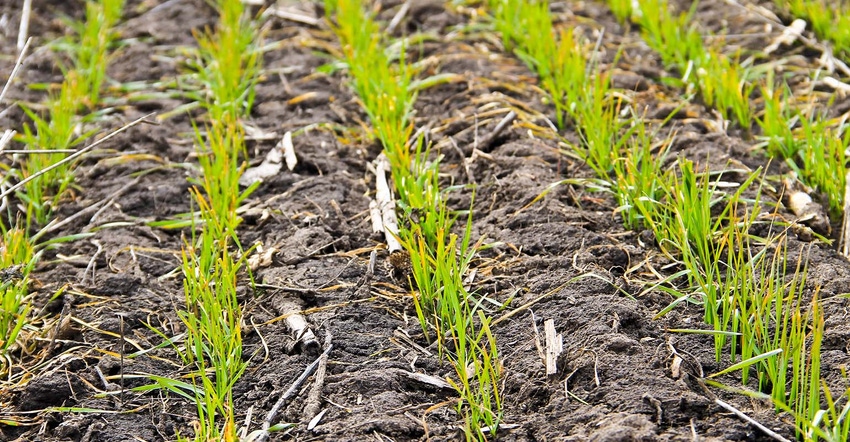
Rain arrived in Kansas wheat country this week with about 3 inches falling in south central Kansas overnight to add to about an inch that fell a few days earlier.
The rain was widely anticipated and apparently did not disappoint farmers. While there may be more yet this week and next, outlooks indicate a decrease in amounts.
“We are pretty saturated right now,” David Abel, agronomy manager for Valley Co-op in Winfield, told Farm Futures. “This (rain) was probably a little bit more than what we needed, but it is not going to hurt the wheat.”
Winter wheat in south central Kansas is just entering the jointing stage. Late on Monday, USDA said statewide crop development was behind last year and the five-year average with 17% jointed versus 29% last year and the 18% average. It also rated the crop 2% excellent, 36% good, 37% fair, 18% poor and 7% very poor.
“Right now things are looking pretty good. People are concerned about a late spring freeze, but if that doesn’t happen we should be in good shape,” said Abel.
Wheat production is expected to be down in 2017, largely because of the drop in winter wheat acreage. USDA in February estimated planted acreage at 32.4 million, the lowest in 108 years.
USDA on Friday will issue its planted acreage estimates for corn, soybeans, wheat and other crops. A Farm Futures’ survey of growers released last week found all-wheat acreage could be down 8.7% this year at 45.8 million.
“This rainfall was widely anticipated as models have predicted it for a couple of weeks. Some of the forecast models are turning drier for week 2 of the outlook but this should help quite a bit,” said Bryce Knorr, Farm Futures senior grain analyst. “”The market remembers how spring rains last year pushed wheat to record yields after a growing season filled with the usual angst.”
While wheat crop ratings drifted lower over the winter, Knorr said they do not yet show significant losses. Should there be any wheat fields with winterkill, the latest rain may allow the fields to be replanted with soybeans
“Spring wheat probably is the market to keep watching,” says Knorr. “Though the trade agrees with our survey for 11.3 million acres of spring wheat, there’s a “whisper” number saying the total could be 2 million below that. The uncertainty is helping keep Minneapolis firm.”
About the Author(s)
You May Also Like




